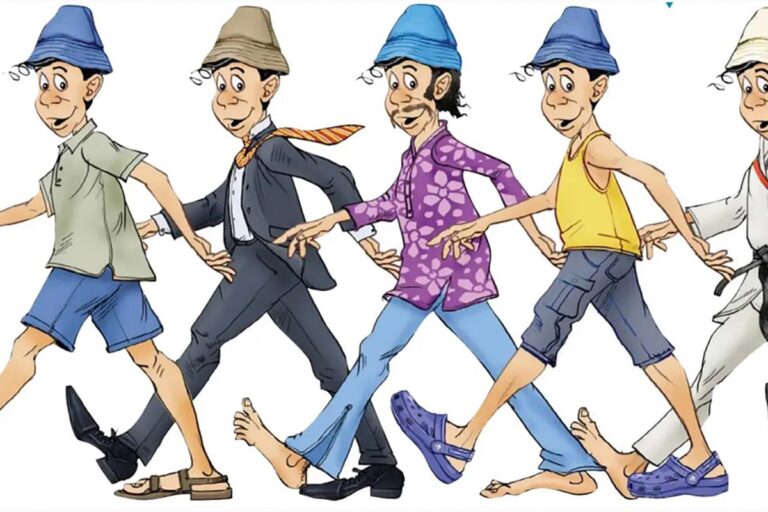
Virtually all countries have national symbols, ranging from food to clothing to flowers. But did you know that some countries also have personifications as symbols?
For example, the United Kingdom has John Bull, Australia has the boxing kangaroo often displayed at national sporting events and Olympic games, Canada has Johnny Canuck and the United States is famously represented by Uncle Sam.
Israel also has its own personification: Srulik, a character of changing age, designed to depict and personify Israel’s values, pride and complexities.
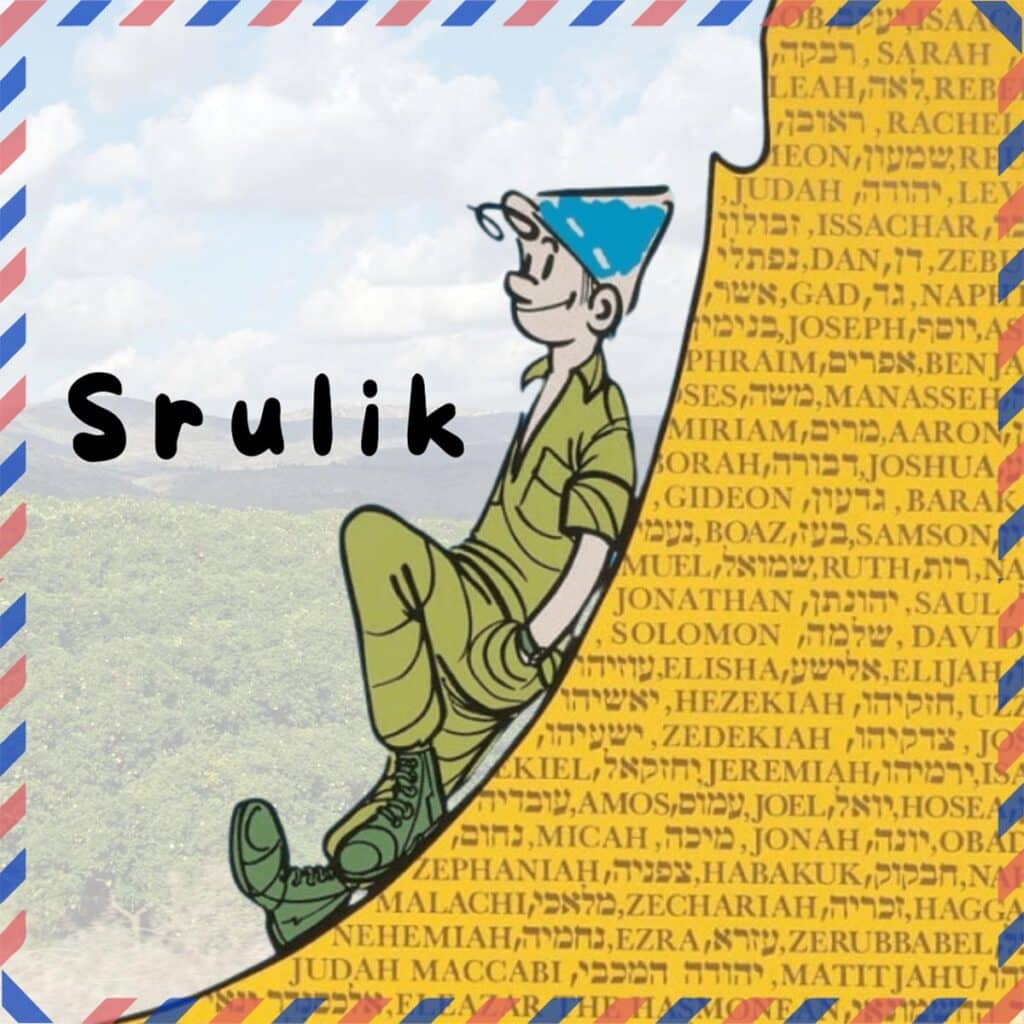
Let’s explore the creation of Srulik and how he has evolved into one of Israel’s most beloved national symbols, starting with Israeli cartoonist Kariel Gardosh.
Kariel Gardosh and the birth of Srulik
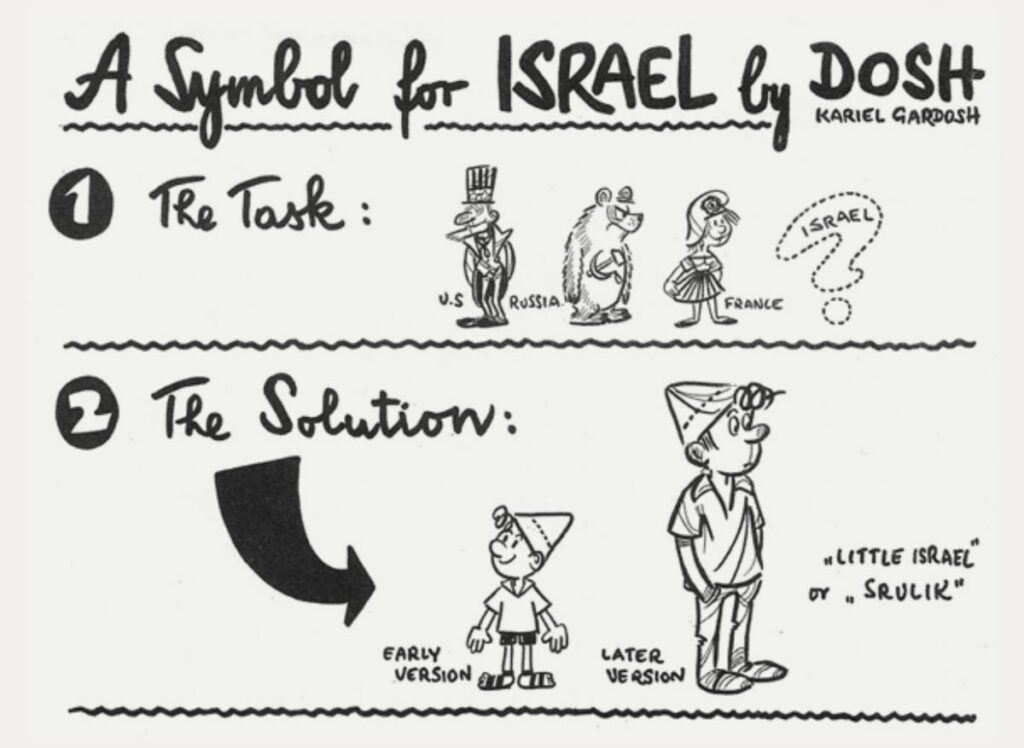
Gardosh, originally named Karl Goldberger, was born in Budapest in 1921 to a Jewish family. During World War II, he and his family were arrested by the Nazis. Gardosh survived, but his parents and most of his family were killed in Auschwitz. His family’s experience in the Holocaust deeply influenced his later artistic work.
After the war, in 1948, Gardosh immigrated to Israel and changed his name to Kariel. He joined the pre-IDF paramilitary group Lehi, but was later arrested after Lehi members assassinated Folke Bernadotte, the U.N. Security Council Mediator for the Israeli-Arab conflict.
After receiving a pardon from the Israeli government, Gardosh joined the Israeli newspaper Maariv, where he began creating stories, skits and political cartoons under the pen name Dosh.
Dosh felt motivated to create a symbol that would accurately and concisely encapsulate the young State of Israel, similar to other national characters such as John Bull, the young heroine of the French Revolution, Marianne and the Russian brown bear.
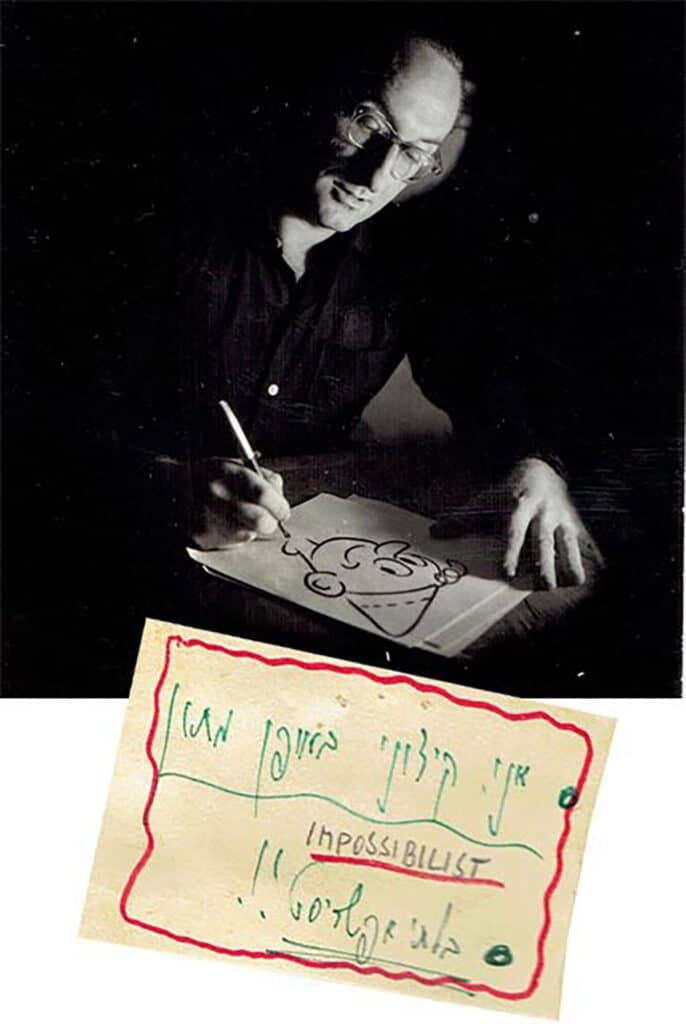
Many have noted that Srulik is the antithesis of the antisemitic caricatures and propaganda cartoons of the 20th century, especially those created by the Third Reich. Unlike these negative stereotypes, Srulik represented the “New Jew” as a proud, strong, and sympathetic Jewish character.
Dosh said, “The symbol of the state should be a small boy in the clothing of a typical Israeli child. In my eyes, to symbolize Israel as I would like to see it: the spirit of the early years of the state and all the positives about it.” Thus, Srulik was born.
Srulik’s physical appearance and personality
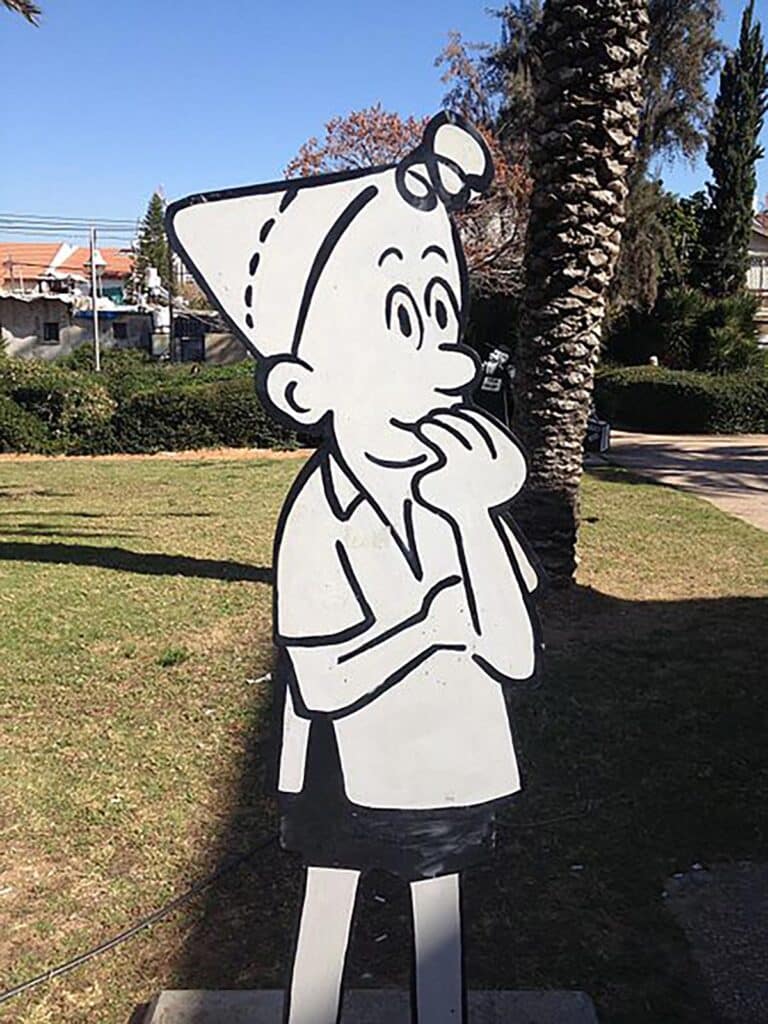
“Srulik,” a once-popular nickname for boys named Yisrael (Israel), was created to embody the spirit of the modern Sabra. As a pioneering and enthusiastic Zionist, the young Srulik wore a cargo shirt, khaki shorts, biblical sandals and an Israeli bucket hat, with a single curl always visible.
Srulik was known for his sharp humor, optimistic chutzpah and his big heart, which was always set on humanitarian causes. His age paralleled that of Israel, and when he first appeared in Maariv in 1951, he was depicted as just under 10 years old.
Srulik growing up with Israel
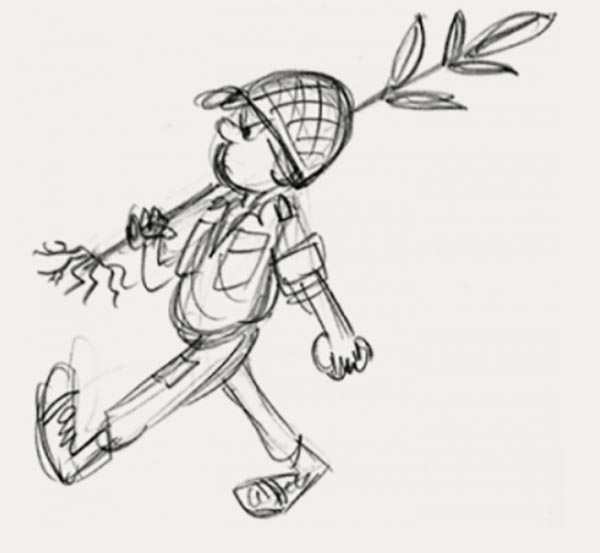
As Israel matured, so did Srulik. Dosh depicted the character in his second decade as taller, leaner and more adult-like. During the Six-Day War, Srulik’s attire shifted from kibbutznik to an IDF uniform, complete with combat boots and helmet.
The cartoon below, from 1967, depicts Israel’s victory in the Six-Day War. Srulik is seen walking swiftly past the cities Israel reconquered (Quatra, Jenin, Jerusalem, Hebron, and the Golan Heights), while an eager historian runs after him trying to document Srulik’s successes.
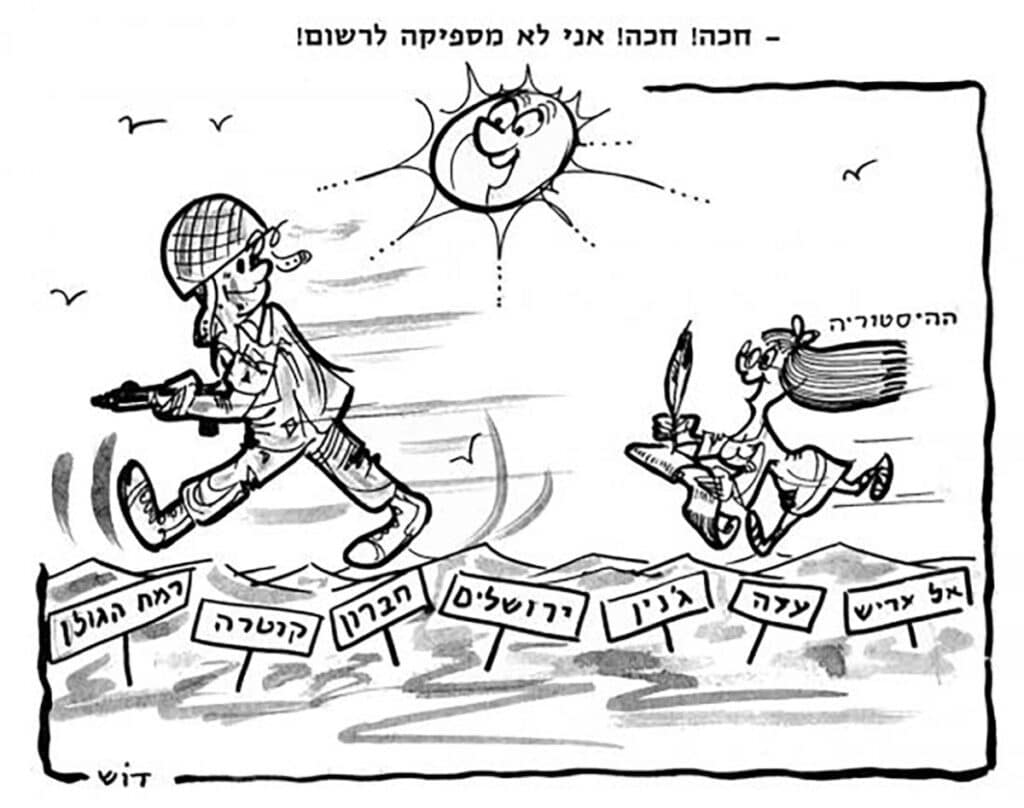
The Hebrew caption reads, “Wait! Wait! I need time to write!” This illustration captures the swift and decisive nature of Israel’s victory. It also shows the nation’s ability to grasp the miraculous nature of this triumph, even as they were still dealing with the war’s aftermath and it had not yet fully receded into the past.
How Srulik evolved through the decades
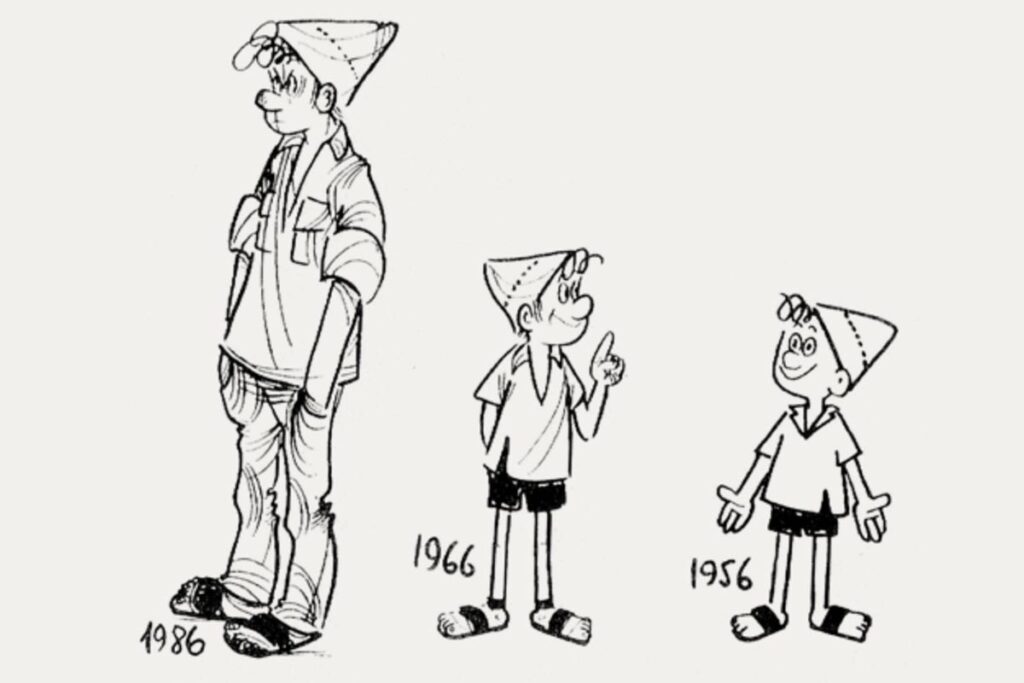
Dosh reflected, “During the initial part of our [Israel’s] existence, Srulik was an innocent child with wandering eyes. Over time, the boy’s physical appearance and demeanor changed. The smile on his face became more skeptical.”
At this point, Dosh decided to halt Srulik’s aging process, preserving his eternal youth. “Lack of self-confidence, extreme mood swings from despair to enthusiasm, a feeling of strength and weakness at the same time, identity torment — all these character traits continue to be our hallmarks…so Srulik continues to be 14 or 15 years old in my paintings with everything that entails,” he added.
As the years went on, Srulik became a beloved national symbol and source of pride. In newspaper cartoons, Srulik reacted to politics, cultural events and everyday happenings with a pragmatic logic that Israelis felt reflected their own sentiments.
As such, Srulik began to branch out, appearing on keychains, mugs, pins, hats and cigarette cartons (which teenage Srulik smoked tons of). At one point, a sticker with his face appeared on every domestically-grown apple. In 1998, Srulik was chosen to adorn a postage stamp, in honor of Israel’s 50th anniversary.
The legacy lives on
From 1981 to 1983, Kariel Gardosh served as a cultural attaché at the Israeli Embassy in England and, upon his return to Israel, was a member of the Israel Broadcasting Authority Plenum.
Sadly, Dosh passed away in 2000 at age 79 from a heart attack. His legacy and that of Srulik continue to resonate with Israelis today as a nostalgic symbol of Israeli identity and values.
The Dosh Prize, established by the Tel Aviv Municipality, Maariv and the Gardosh family, is awarded every two years to a promising cartoonist who embodies Dosh’s distinctive and conceptual artistic spirit.
In 2018, in honor of Israel’s 70th birthday, seven cartoonists were asked by the Israel International Animation and Comics Festival to reinterpret Srulik for the modern era. Their creative interpretations included Srulik wearing crocs, donning a suit, using a smartphone and being physically tied down like Gulliver by hostile nations.
One of the artists, Nisim (Nosko) Hizkiyahu, depicted the character wearing a shtreimel instead of a kova tembel:

“Dosh’s Srulik, which was created in Israel’s early days when life was simpler and modest, symbolizes the good and righteous Israeli that we once were,” Hizkiyahu said.
“It turns out that quite a lot has gone wrong [since then]. In my opinion…the hat that Israel is wearing today is more religious, messianic, fanatic and discriminatory…But if it’s any consolation, at least we can look back on our history and receive inspiration from the original Srulik character.”
Srulik post-October 7
After Oct. 7, Kariel Gardosh’s children, Miki and Daniela, have revived Srulik and enlisted him in the Israeli reserves. They’ve started two new initiatives. The first is Srulik’s own Facebook page, titled, “Srulik is Always with Us” where he will attempt to navigate life in these unique and challenging times.
The second is a sticker designed by illustrator Shay Charka that can be purchased in various gas stations across the country. Charka has also illustrated Srulik taking on the red hand pins at the Oscars.
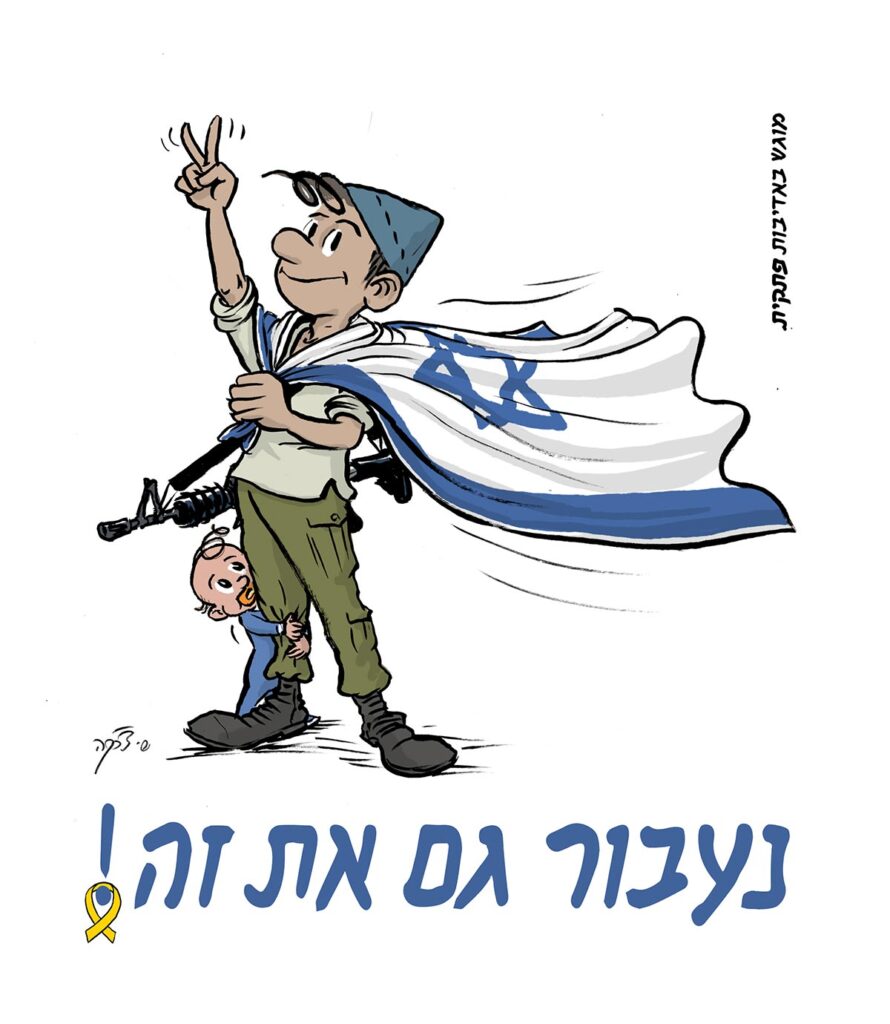
A permanent exhibit featuring Srulik and other works of Dosh live at the Israeli Museum of Cartoons in Holon.
Today, it’s unclear whether Srulik still lives and toils on a kibbutz or has transitioned to the high-tech world of Tel Aviv. However, one thing is certain: from his beginnings as a bright-eyed optimistic youth, to his angsty teenage years, and even through a mid-life crisis, Srulik continues to reflect the evolving phases, challenges and aspirations of the nation he was created to represent.
Read more: The very Israeli history of the bucket hat
Originally Published Mar 15, 2024 04:23PM EDT
